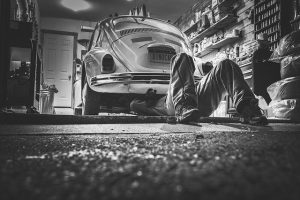The easiest and most effective way to improve longevity is to keep the car clean inside and out.
With modern car lifespans averaging 12 years and 200,000 miles, modern technologies have made cars more reliable than ever. Thanks to precise fueling and tight tolerances, modern engines are also more efficient and powerful, resulting in a more serviceable lifetime.
Of course, there are some exceptions to the rule like the famous 1966 Volvo 1800S driven by Irv Gordon who clocked more than 3.2 million miles despite it being a sporty 2-door coupe made for performance. But, if you maintain your car properly and take some preventative care, it can last well past the average mark and even a lifetime.
Whether you drive a sports car like the Toyota Supra or a compact Honda Civic, the same rules apply to all models. Keeping your car for longer will also save you a lot of money that would otherwise be spent on repairs, and will also allow you to use your car for longer, delaying the next car purchase. Here are 8 important tips to help ensure your car lasts a lifetime and save a few thousand bucks in the process.
Choosing a reliable model
While it is possible for any modern vehicle to cross the average lifetime mark with proper maintenance and care, opting for a reliable model will make maintenance a lot easier and cheaper. This is particularly important if you plan on keeping your car for a long time.
There are plenty of sources and reviews online that will help you find a reliable model. According to Consumer Reports, Japanese brands like Toyota and Honda last the longest with minimal maintenance, while brands like Fiat, Lincoln, and MINI are the most problematic, requiring frequent workshop visits.
Modern cars are also a lot more advanced, and expensive luxury models with complicated electronics will be a lot harder to maintain in the long run. So, opting for a regular car from a reliable brand is the best option if reliability is your main concern.
Changing your oil

With internal combustion engines, oil is the lifeblood that keeps everything in check and running properly. Its main purpose is to avoid contact between metal components and dissipate heat. So, replacing engine oil according to manufacturer recommendations is by far the most important tip to make your car last longer. Always use the correct grade of oil, and refer to the owner’s manual to find the recommended grade and type depending on your ambient temperature.
When changing oil, also make sure the oil filter is swapped out with it to get rid of all the impurities in the system. Also, avoid using cheap oil to save a few bucks, as it can break down a lot faster and damage the engine in the long run. Oil effectiveness will also decrease with age, so stick to the maintenance schedule even if the running is low.
If you use the car in unideal conditions like urban traffic, heavy towing, and others where stresses are high, shorten the oil change window to avoid wear and tear. Along with the regular schedule, manufacturers will also provide maintenance details for heavy usage, which will usually shorten the oil lifespan from 10,000 to 5,000 miles.
Periodic fluid and filter checkups
Like the engine oil, also make sure you periodically check all the other fluid and filters in your car. Start with the coolant, and check if the correct level is maintained in the reserve tank after the car is warmed up. Other than its level, the quality of the coolant can also be checked by using coolant checking strips.
Next up is brake fluid, and on similar terms, check the level in the reservoir first. If it is low, there might be a leak somewhere or your brake pads might be worn down. Since brake fluid is hygroscopic, it will eventually break down after a while, and timely brake flushes according to the maintenance schedule are recommended to keep them working at optimal condition.
If the car is equipped with a manual transmission, the same also applies to the clutch fluid.
Automatic transmission fluid is also another maintenance item that is usually ignored. Checking and flushing the fluid according to the schedule will keep the transmission shifting smoothly and last quite a while longer. To make sure the engine breathes easily, checking and cleaning the air filter is very important.
A clogged air filter can make the engine run inefficiently and increase fuel consumption. Similarly, cabin air filters should also be swapped out to ensure clean airflow into the cabin. There are several other components like fuel filters, and more to check and replace according to the schedule.
Maintain optimal revs
Despite the modern engines and higher quality, keeping it healthy will require optimal revs, particularly when the engine is cold. When you start off your day, give the engine at least 30 seconds to warm up, which can be used to do up your seatbelt and set the radio. Since all the oil will settle down after parking a car overnight, it will take some time to start distributing properly. So, driving immediately after startup will increase the wear and tear of the components. Taking it easy for the initial few miles will go a long way to increase the longevity of all components.
Similarly, driving at low revs all the time will also be detrimental to the engine’s health, as it will promote carbon build-up inside the engine and affect many components. To prevent this, take the engine to the redline at least once every few hundred miles when it’s safe to clear everything out and reduce buildup. Of course, avoid redlining on a cold engine. On cars equipped with turbochargers, maintain low revs for the final few miles to let the turbocharger cool down and avoid damaging the bearings.
Rust prevention
If you’re a resident of the salt belt, you’ll be familiar with the effect of rust on cars and how quickly it can eat through the bodywork. All modern cars come with plenty of anti-corrosion coatings. But, driving through salt-sprayed roads and snow can eat through these coatings eventually and start rusting the underside of the car.
To avoid this, always clean the underbody thoroughly once in a while to get all the salt off and use some form of breathable wax coating to coat the underside before every winter. If rust has already started, rust converters can be used before applying anti-rust coatings and prolong the life of your car.
Don’t cheap out on parts
Whenever the car is serviced, always make sure you use OEM and original spare parts for reliable performance and safety. Saving a few bucks on cheap parts or oil can damage the car in the long run and even void the warranty in most cases. The same also applies to aftermarket performance modifications that can put extra pressure on all the components and lead to premature wear.
When filling up with fuel, make sure you use the right specification mentioned in the owner’s manual.
Avoid unnecessary loads
While high-performance models are built from the ground up to be as light as possible to aid efficiency and performance, being light will also lessen the wear on all components and reduce engine load. So, even if you drive a large SUV, it’s a good idea to avoid any unnecessary weight to improve longevity. Any unnecessary strain will take several miles off the car’s life in the long run.
Reducing the load will also improve efficiency, helping you save a few bucks on gas.
Keep it clean
The easiest and most effective way to improve longevity is to keep the car clean inside and out. Driving in harsher weather and direct sunlight will take its toll on the paintwork and eat away the clear coat, exposing the body to rust and other complications. To avoid this, always keep the car clean and fresh, especially if it’s been driven in rain or snow.
Waxing the paintwork will also improve durability and make the paint last a lot longer, keeping the car looking fresh and new. Like the body, also clean the engine bay and underside occasionally to get the dirt and grime out before it fouls with the electricals and other components.


Join the conversation!